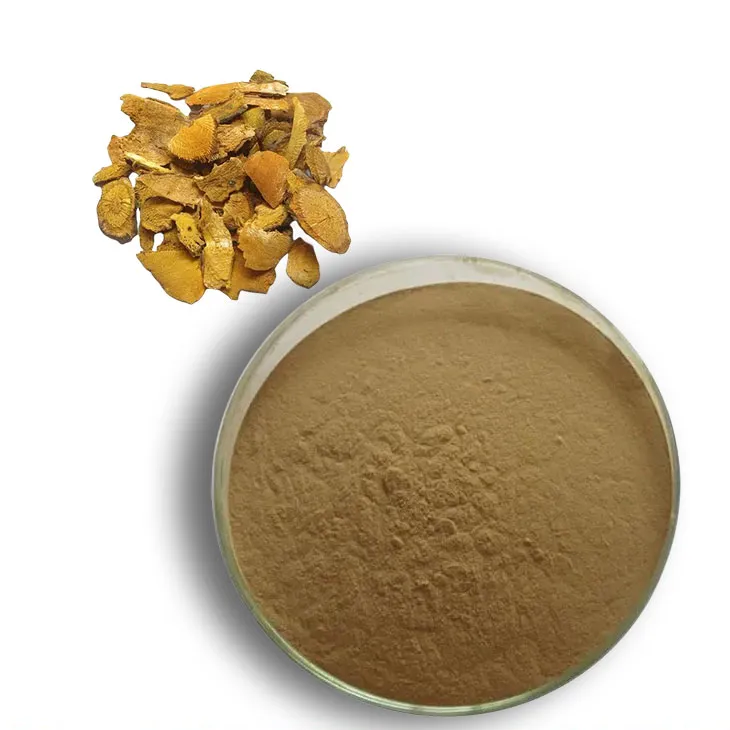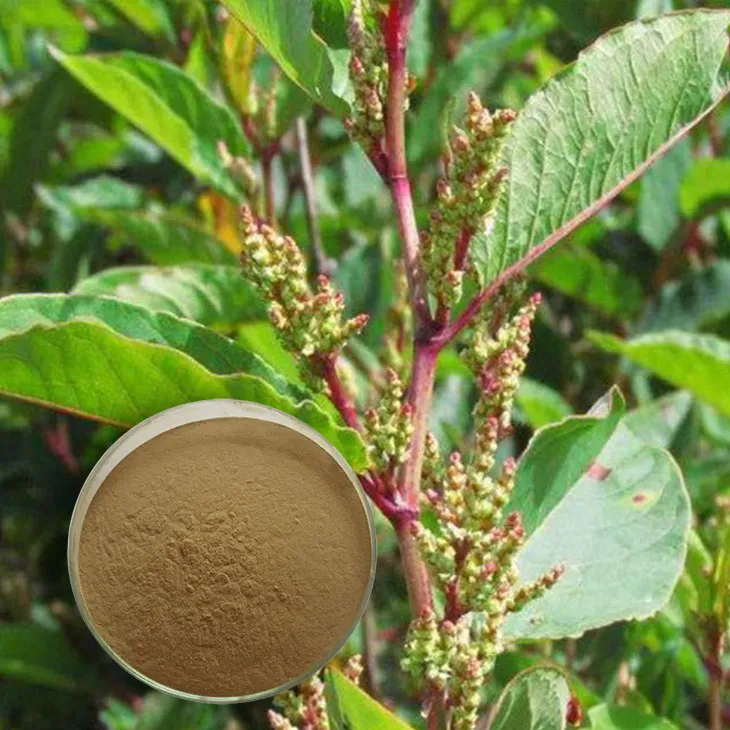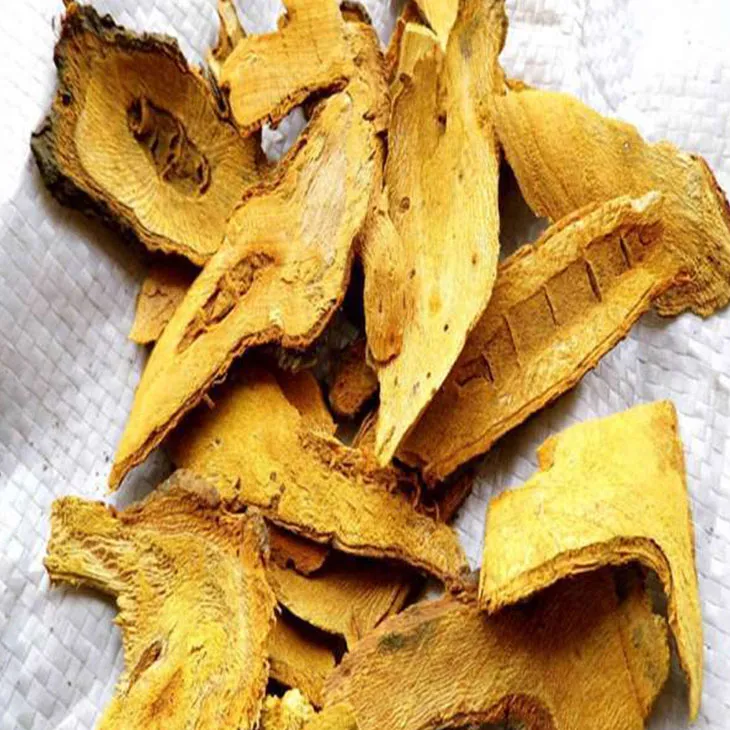- 0086-571-85302990
- sales@greenskybio.com
The best natural source of polygonum cuspidatum extract.
2024-11-28

1. Introduction
Polygonum cuspidatum, also known as Japanese knotweed, has been widely studied for its potential health benefits. The extract of this plant contains various bioactive compounds such as resveratrol, emodin, and polydatin. Finding the best natural source of Polygonum Cuspidatum Extract is crucial for obtaining high - quality extracts with consistent potency. This involves considering multiple factors including geographical location, ecological conditions, genetic factors, and extraction methods.

2. Geographical and ecological aspects
2.1. Climate
Polygomum cuspidatum thrives in certain climatic conditions. Mountainous regions often provide an ideal climate for its growth. These areas typically have cooler temperatures and higher humidity levels compared to low - lying plains. The cool climate helps to slow down the plant's growth rate, allowing it to accumulate more bioactive compounds. For example, in some mountainous regions in Asia, the temperature ranges from 10 - 20 degrees Celsius during the growing season, which is conducive to the synthesis of resveratrol in Polygonum cuspidatum.
2.2. Soil type
The type of soil also plays a significant role in determining the quality of Polygonum cuspidatum. Well - drained, fertile soils rich in organic matter are preferred by the plant. Such soils can provide the necessary nutrients for the plant's growth and development. For instance, loamy soils with a good balance of sand, silt, and clay are known to support healthy growth of Polygonum cuspidatum. In addition, soils with a slightly acidic to neutral pH (around 6 - 7) are favorable for the plant's nutrient uptake.
2.3. Altitude
Altitude can influence the chemical composition of Polygonum cuspidatum. Generally, plants growing at higher altitudes may be exposed to more ultraviolet radiation and harsher environmental conditions. This can lead to an increase in the production of certain bioactive compounds as a defense mechanism. For example, Polygonum cuspidatum growing at altitudes above 1000 meters may have a higher concentration of resveratrol compared to those growing at lower altitudes. However, extremely high altitudes may also limit the plant's growth due to factors such as low temperature and oxygen availability.

3. Genetic factors
Genetic factors within different strains of Polygonum cuspidatum can significantly affect the quality of the extract. Genetic diversity exists among different populations of the plant. Some strains may be more efficient in synthesizing certain bioactive compounds. For example, a particular strain found in a specific region may have a genetic predisposition to produce higher levels of resveratrol. Through genetic research and selection, it is possible to identify and cultivate strains with superior qualities for extract production.
3.1. Cross - breeding
Cross - breeding different strains of Polygonum cuspidatum can also be a strategy to improve the quality of the extract. By combining the desirable genetic traits of different strains, new varieties can be developed. For instance, a strain with high resveratrol content can be crossed with a strain that has good adaptability to different environmental conditions. However, cross - breeding requires careful planning and experimentation to ensure that the resulting hybrids maintain the desired characteristics.
3.2. Genetic modification
Although genetic modification of Polygonum cuspidatum is a more controversial approach, it may offer potential benefits in terms of enhancing the production of bioactive compounds. Genetic engineering techniques can be used to introduce genes that are involved in the biosynthesis of specific compounds. For example, genes encoding enzymes for resveratrol synthesis could be inserted into the plant's genome to increase resveratrol production. However, strict regulations and safety assessments are necessary to ensure the safety of genetically modified Polygonum cuspidatum products.

4. Sustainable extraction methods
Sustainable extraction methods are essential to protect the natural environment of Polygonum cuspidatum and ensure a continuous supply of high - quality extract. Unsustainable extraction can lead to over - harvesting, which may deplete the plant population and damage the ecosystem.
4.1. Selective harvesting
Selective harvesting involves choosing only mature plants or specific parts of the plant for extraction. This allows younger plants to continue growing and reproducing. For example, only the aerial parts of Polygonum cuspidatum can be harvested, leaving the roots intact to support the plant's regeneration. In addition, harvesting should be done at the appropriate time of the year when the bioactive compound levels are highest.
4.2. Organic extraction
Using organic solvents for extraction is a more environmentally friendly approach compared to some harsh chemical solvents. Organic solvents such as ethanol and ethyl acetate are commonly used in the extraction of Polygonum Cuspidatum Extract. These solvents are relatively safe and can be easily removed from the final product. Moreover, organic extraction methods can help to preserve the integrity of the bioactive compounds in the extract.
4.3. In - vitro culture
In - vitro culture of Polygonum cuspidatum cells or tissues can be an alternative method for extract production. This method allows for the controlled production of bioactive compounds without relying on wild - harvested plants. By culturing plant cells in a laboratory setting, it is possible to optimize the growth conditions and enhance the production of specific compounds. However, in - vitro culture also has its challenges, such as high cost and technical complexity.
5. Conclusion
In conclusion, the best natural source of Polygonum Cuspidatum Extract is determined by a combination of geographical, ecological, genetic, and extraction - related factors. Mountainous regions with suitable climates, fertile soils, and appropriate altitudes are favorable for the growth of high - quality Polygonum cuspidatum. Genetic factors within different strains need to be considered to obtain plants with high bioactive compound content. Sustainable extraction methods are crucial to protect the plant's natural environment and ensure a long - term supply of the extract. By taking all these factors into account, it is possible to identify and utilize the best natural source of Polygonum cuspidatum extract for various applications in the fields of medicine, cosmetics, and food.
FAQ:
Question 1: Why are mountainous regions with a specific climate good for the growth of Polygonum cuspidatum?
Mountainous regions with specific climates often provide unique conditions. For example, the altitude can lead to variations in temperature, sunlight exposure, and air quality. The cooler temperatures at certain altitudes might slow down the growth rate, allowing the plant to develop more complex chemical compounds. Adequate sunlight exposure is crucial for photosynthesis, which is directly related to the production of active substances in the plant. Moreover, the air in mountainous areas is usually cleaner, with less pollution, which is beneficial for the healthy growth of Polygonum cuspidatum.
Question 2: How do genetic factors within different strains of Polygonum cuspidatum influence the quality of the extract?
Different strains of Polygonum cuspidatum may have genetic variations. These genetic differences can result in variations in the biosynthesis of bioactive compounds. Some strains may be genetically predisposed to produce higher amounts of certain beneficial substances, such as resveratrol. Genetic factors can also influence the plant's resistance to diseases and pests, which in turn can affect the quality of the extract. If a strain is more resistant, it is more likely to grow healthily and produce a higher - quality extract.
Question 3: What are some sustainable extraction methods for Polygonum cuspidatum?
One sustainable extraction method is selective harvesting. Instead of harvesting all the plants in an area, only mature plants are selected for extraction. Another method is organic farming practices. By using natural fertilizers and pest control methods, the growth environment of Polygonum cuspidatum can be maintained in a more natural and sustainable way. Additionally, modern extraction techniques that minimize waste and maximize the extraction of active components can also be considered as part of sustainable extraction methods.
Question 4: How can we ensure the continuous supply of high - quality Polygonum cuspidatum extract?
To ensure a continuous supply of high - quality extract, first, we need to protect the natural habitats of Polygonum cuspidatum. This includes preventing deforestation and over - grazing in the areas where it grows. Second, promoting sustainable cultivation methods can increase the overall quantity of the plant available for extraction. Third, strict quality control during the extraction process is necessary to ensure that only high - quality extracts are produced and distributed.
Question 5: Are there any regulations regarding the extraction of Polygonum cuspidatum?
Yes, there are often regulations regarding the extraction of Polygonum cuspidatum. These regulations may vary by region. Some areas may have restrictions on the quantity that can be harvested to protect the wild population. There may also be regulations on the extraction methods to ensure environmental sustainability. Additionally, regulations may be in place to ensure the safety and quality of the extract for use in various products such as dietary supplements or pharmaceuticals.
Related literature
- The Ecology and Chemical Composition of Polygonum cuspidatum"
- "Genetic Diversity in Polygonum cuspidatum and Its Impact on Extract Quality"
- "Sustainable Extraction Practices for Medicinal Plants: A Case Study of Polygonum cuspidatum"
- ▶ Hesperidin
- ▶ citrus bioflavonoids
- ▶ plant extract
- ▶ lycopene
- ▶ Diosmin
- ▶ Grape seed extract
- ▶ Sea buckthorn Juice Powder
- ▶ Beetroot powder
- ▶ Hops Extract
- ▶ Artichoke Extract
- ▶ Reishi mushroom extract
- ▶ Astaxanthin
- ▶ Green Tea Extract
- ▶ Curcumin Extract
- ▶ Horse Chestnut Extract
- ▶ Other Problems
- ▶ Boswellia Serrata Extract
- ▶ Resveratrol Extract
- ▶ Marigold Extract
- ▶ Grape Leaf Extract
- ▶ blog3
- ▶ blog4
-
Kudzu root extract suppliers.
2024-11-28
-
The Most Well - received Vitamin B9 Powder.
2024-11-28
-
Suppliers of Organic β - Carotene Powder.
2024-11-28
-
100% Pure Organic Black Garlic Extract.
2024-11-28
-
The best - quality astaxanthin.
2024-11-28
-
Fenugreek Extract Powder
2024-11-28
-
Angelica sinensis extract
2024-11-28
-
Oat Straw Extract Powder
2024-11-28
-
White Peony Extract
2024-11-28
-
Horse Chestnut Extract
2024-11-28
-
Sea buckthorn oil
2024-11-28
-
Kupilu Extract
2024-11-28
-
Grapefruit Seed Extract Powder
2024-11-28
-
Beetroot Powder
2024-11-28
-
American Ginseng Root Extract
2024-11-28





















